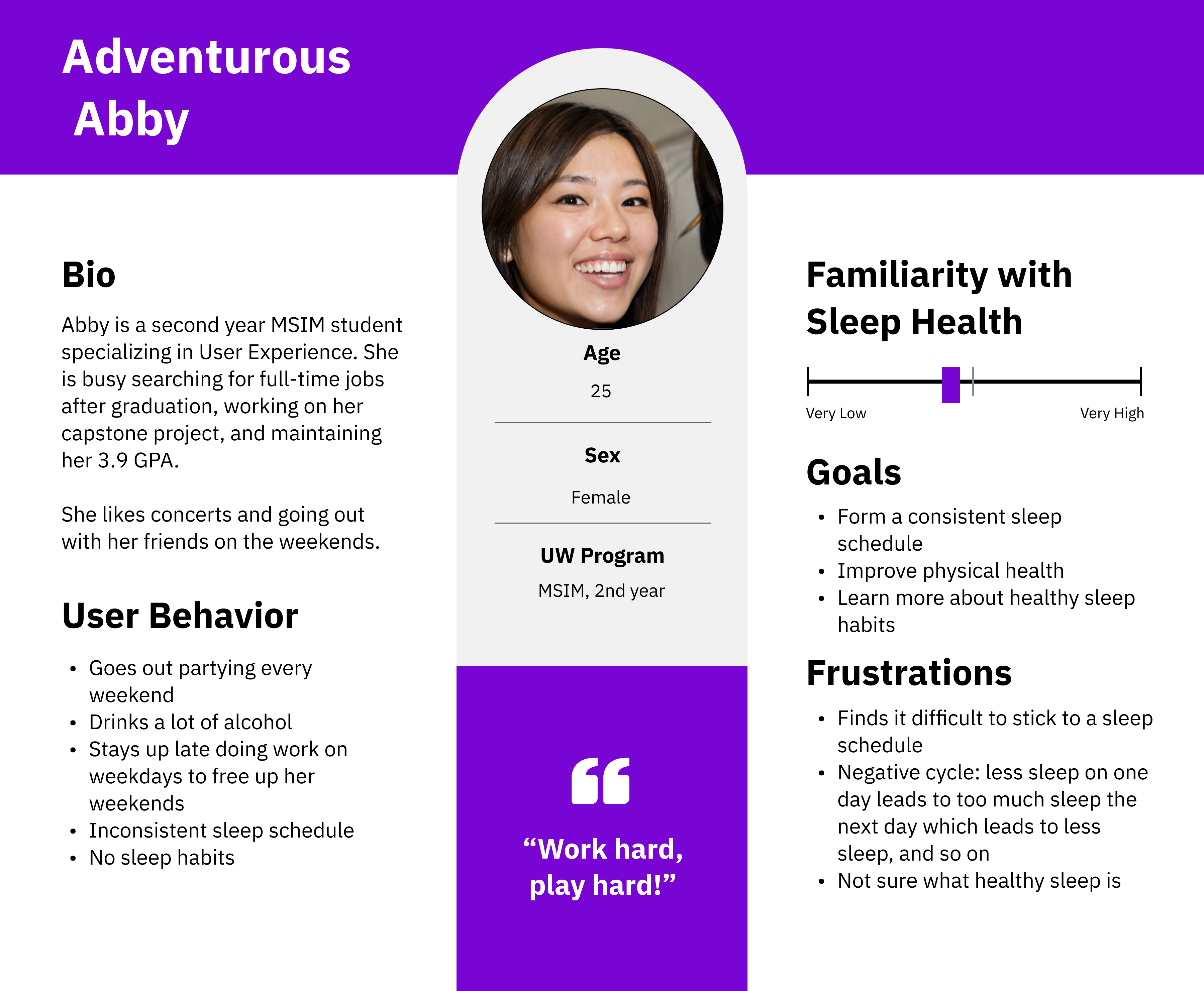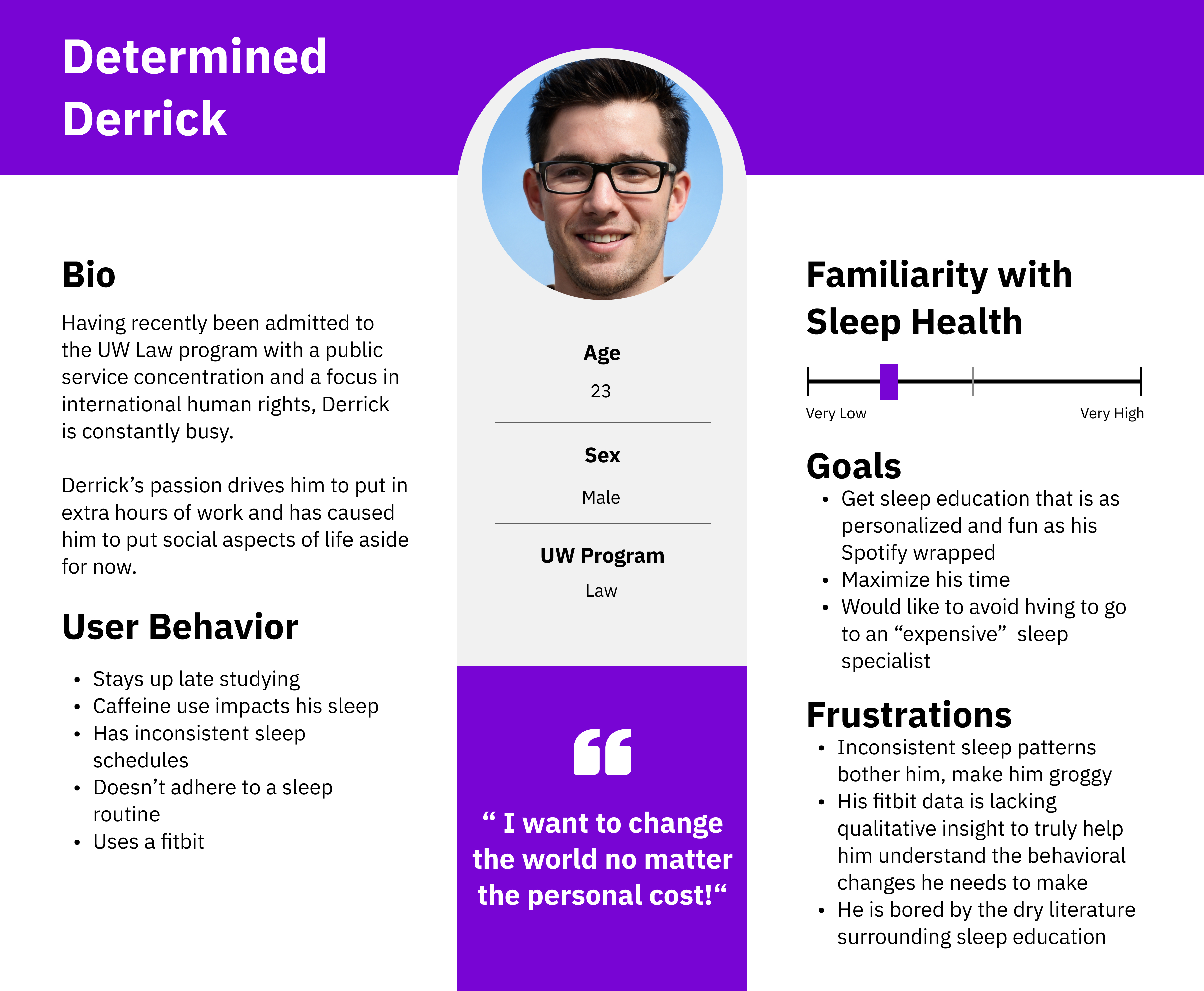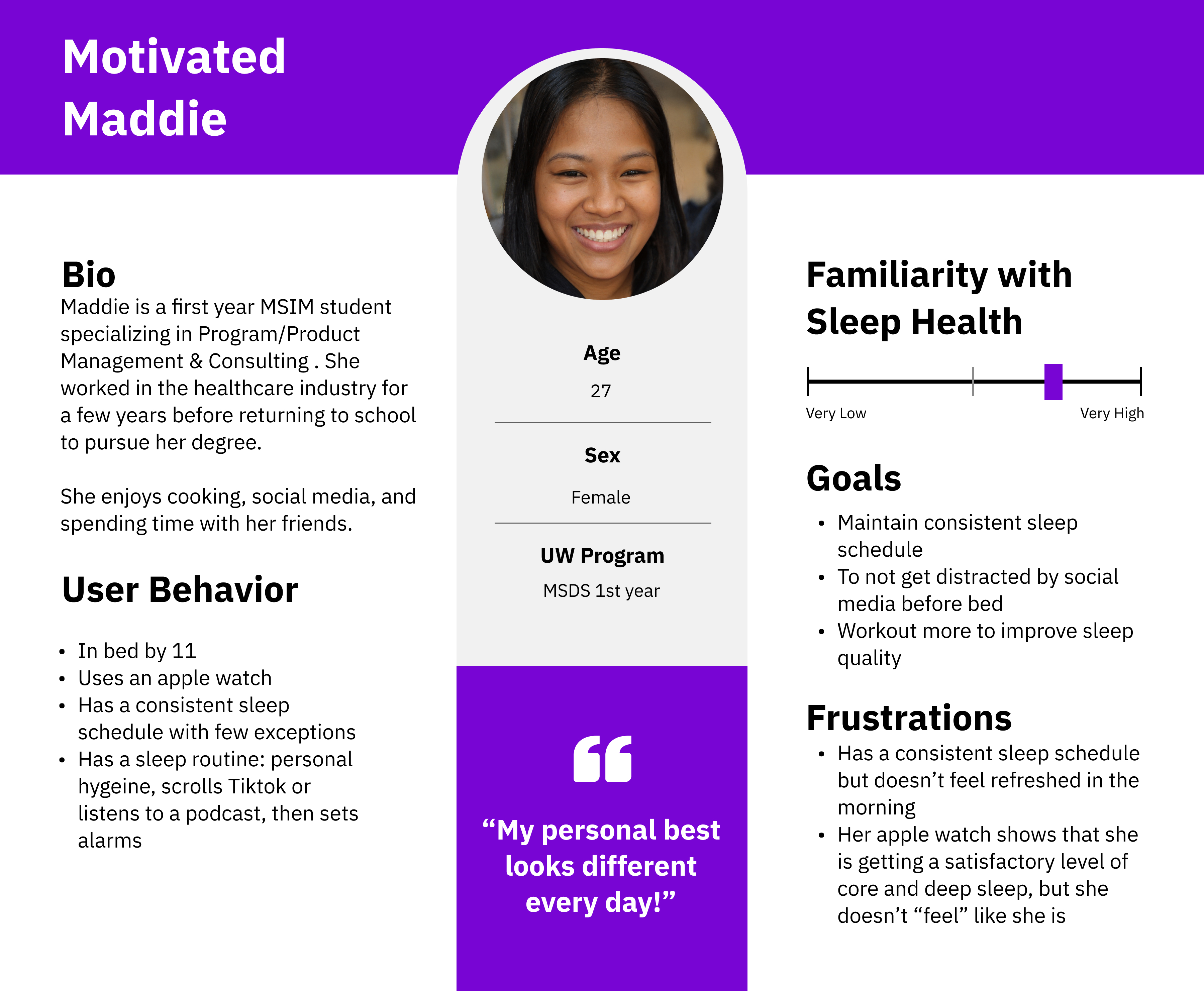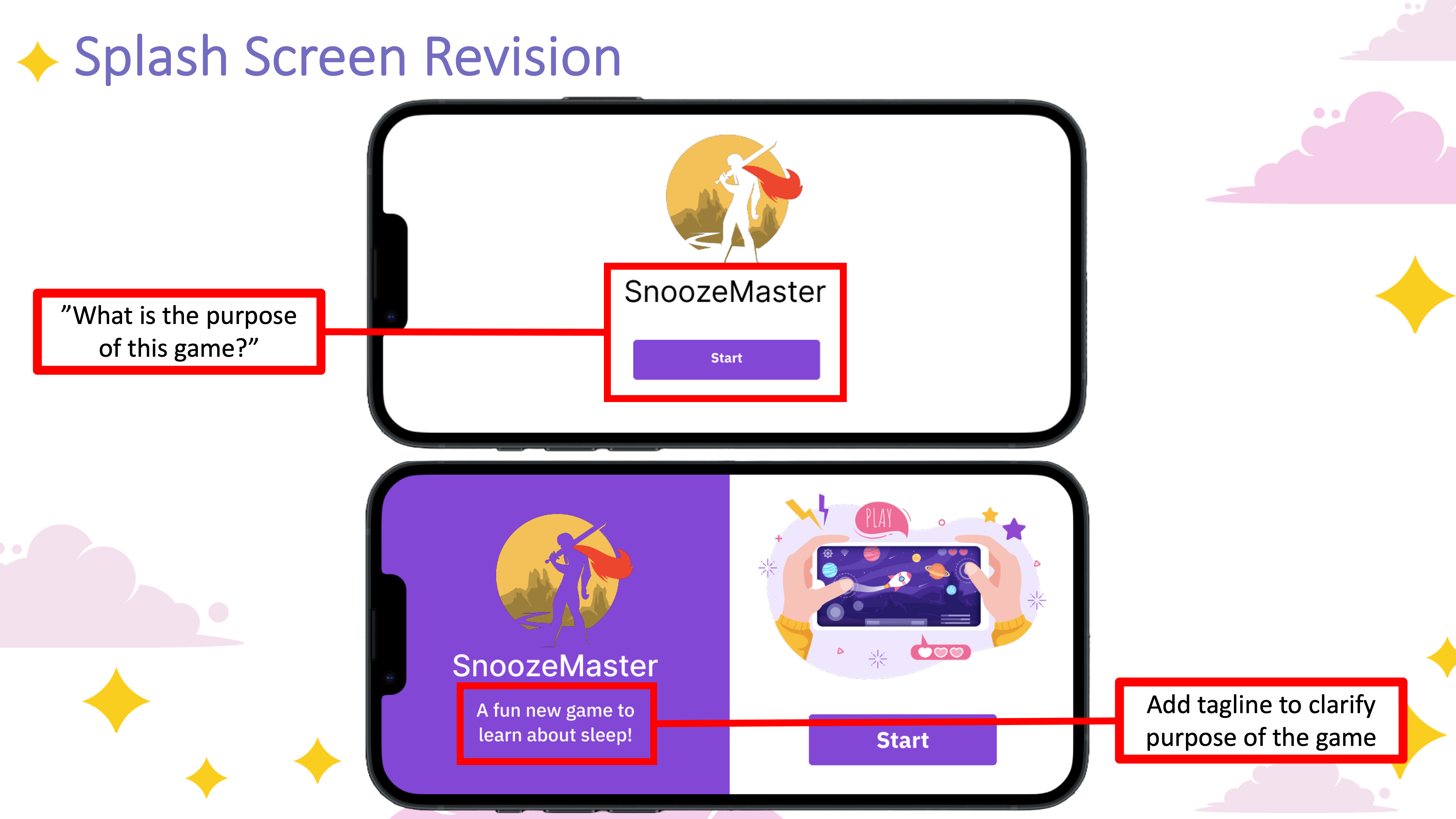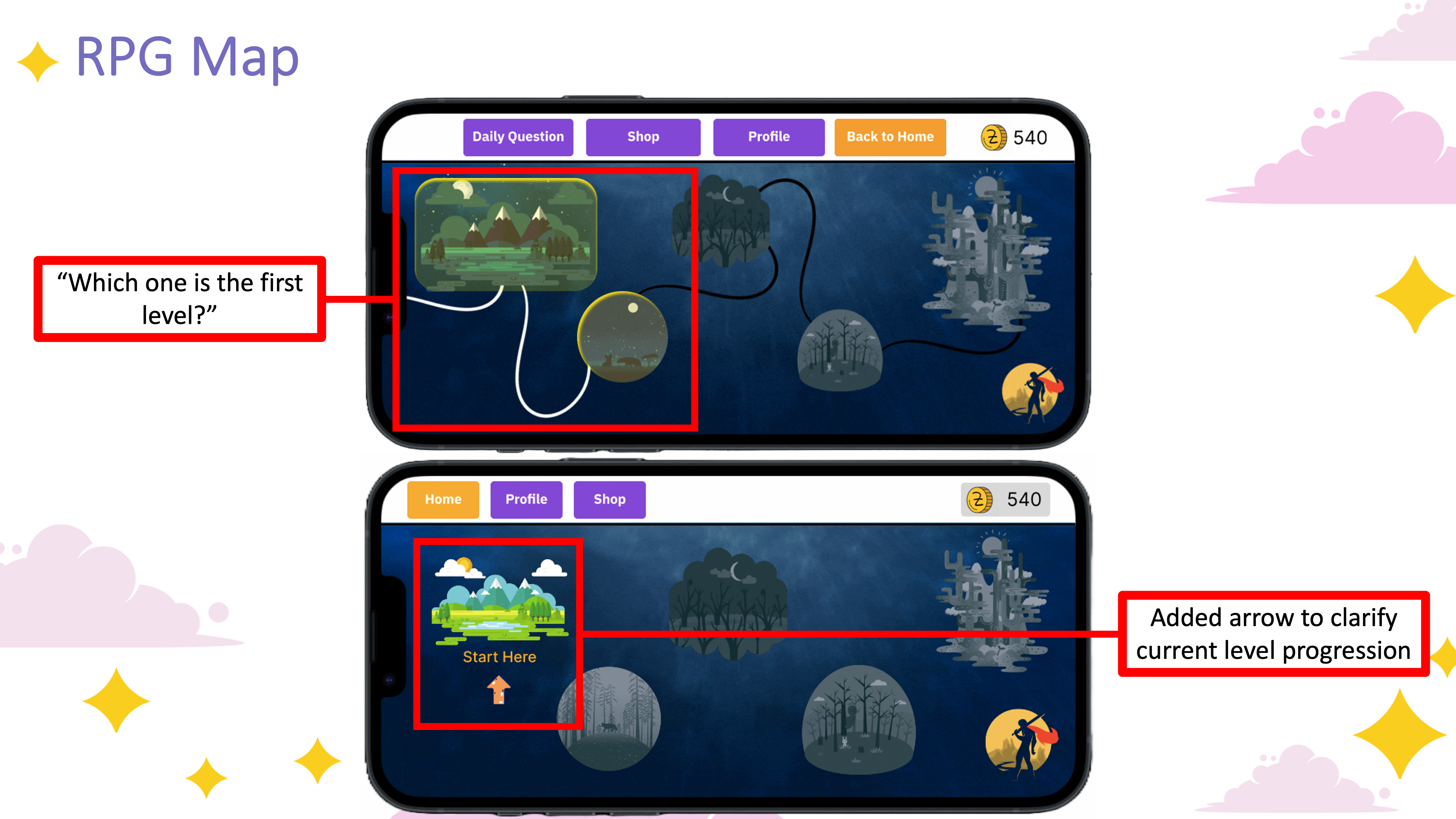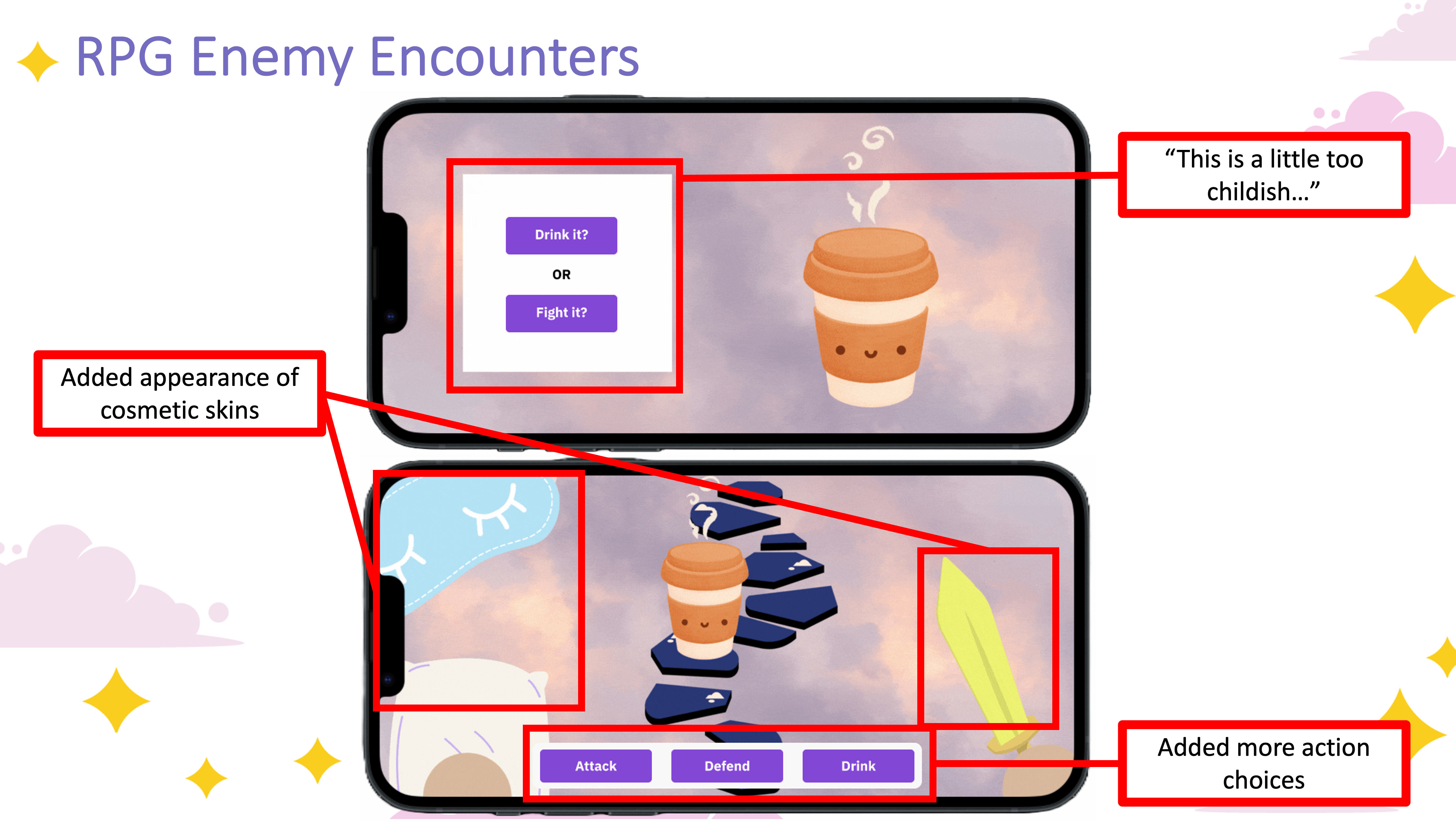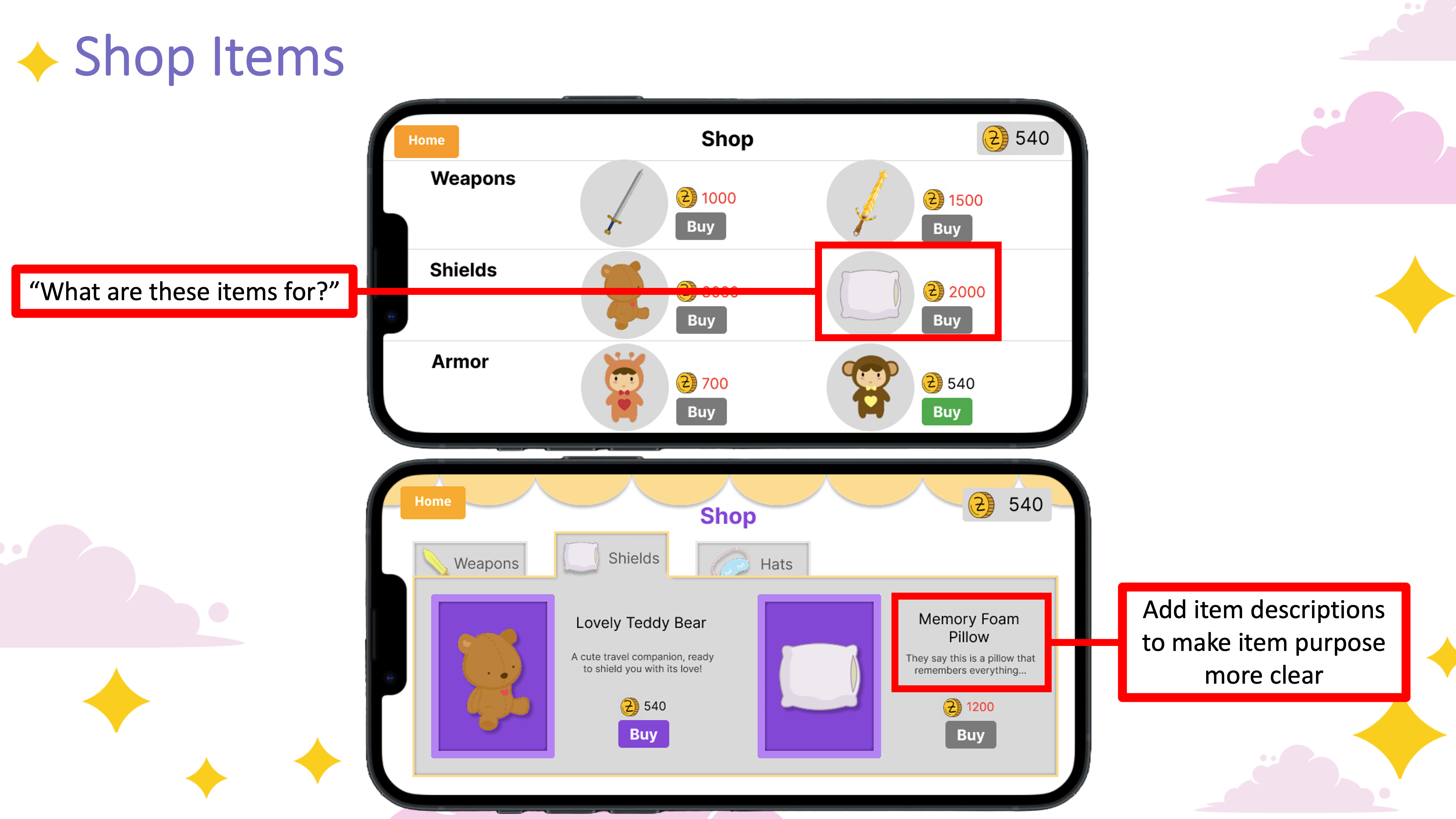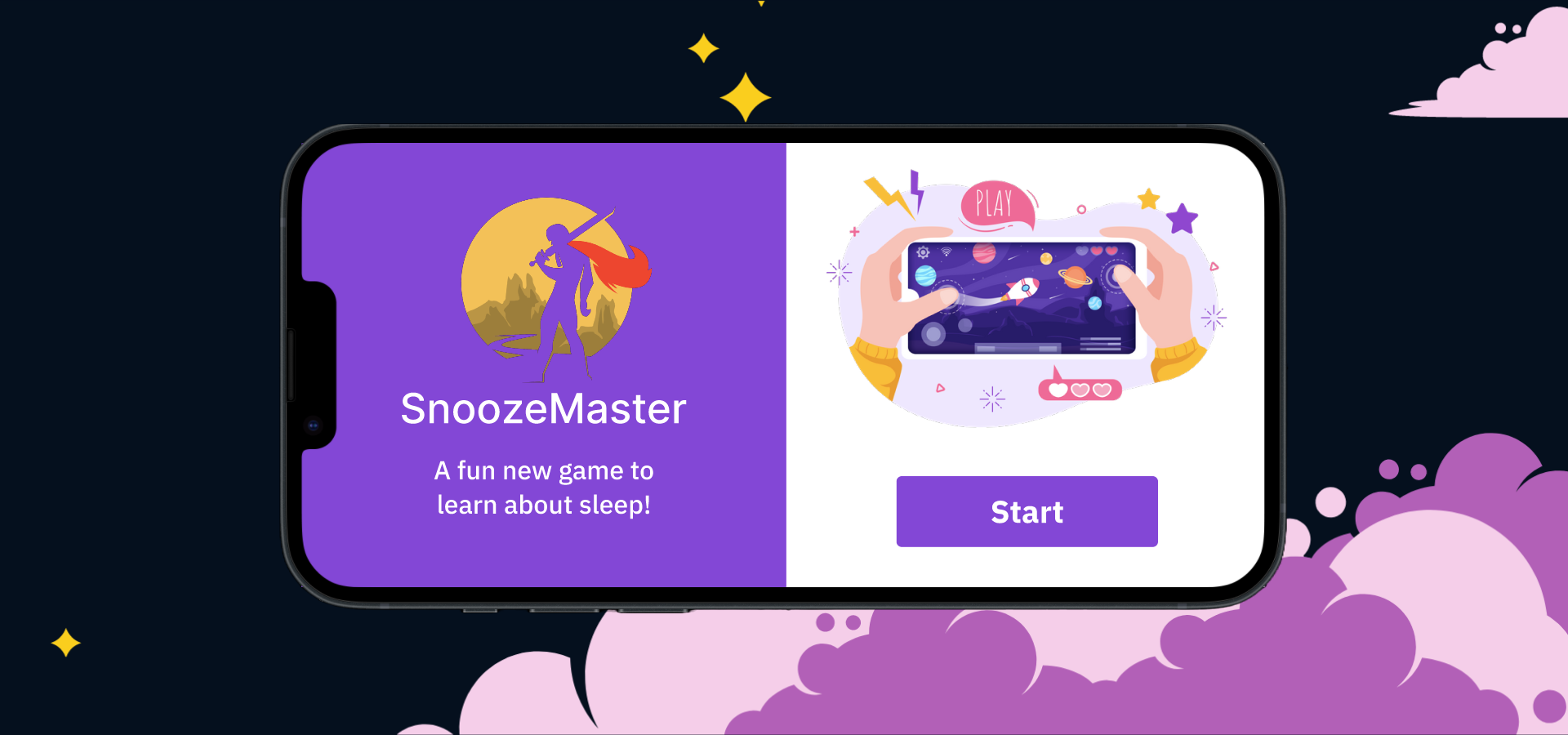
SnoozeMaster
A gamified approach to educating graduate students about sleep health.
Role
UX Designer
UX Researcher
Team
Team JERRi, my fellow UW MSIM students:
Jessica Kuo, Erica Adams, Renuka Dixit, Ryan Sohn
Responsibilities
Literature review, User interview, User persona, Sketching, Storyboarding, Wireframing, Prototyping, Visual design, Usability testing
Tools
Figma
Timeline
October 2022 - December 2022
(~10 weeks)
Background
A study conducted by Casper-Gallup in 2022 discovered that one in three American adults — representing about 84 million people — describe their sleep as fair or poor. The same study also reports that the American economy loses an estimated $44.6 billion annually in unplanned absenteeism as a result of poor sleep among workers. As sleep is linked to many health outcomes and an important factor in the economy, this is a crucial problem space that needs to be addressed.
My team selected this problem space as our group assignment for IMT 540: Design Methods. Our directions were to select a design question and follow the user design process to form a solution.
What is SnoozeMaster?
- An educational gaming app about sleep health that is targeted towards graduate students.
- Users adventure through the dreamverse and fight sleep demons. The goal of the game is to defeat enemies using facts about sleep health.
- Users gain these facts by clearing levels or playing the daily question minigame.
- Includes in-game currency (Z-coins) from defeating enemies or hitting sleep targets. Currency can be redeemed in shop for cosmetic skins.
Problem Statement
How can we educate graduate students at the University of Washington about forming better sleeping habits?
Solution
Create an educational game that helps students learn about sleep health through a fun and interactive RPG. SnoozeMaster allows players to adventure through the dreamverse and learn about sleep health through enemy encounters.
SnoozeMaster Homepage
- Main page of the application
- Links to all other features
- Reminder of target bedtime

Role-playing Game (RPG)
- Map of all levels
- Fight against sleep demons
- Gain new sleep facts from clearing levels
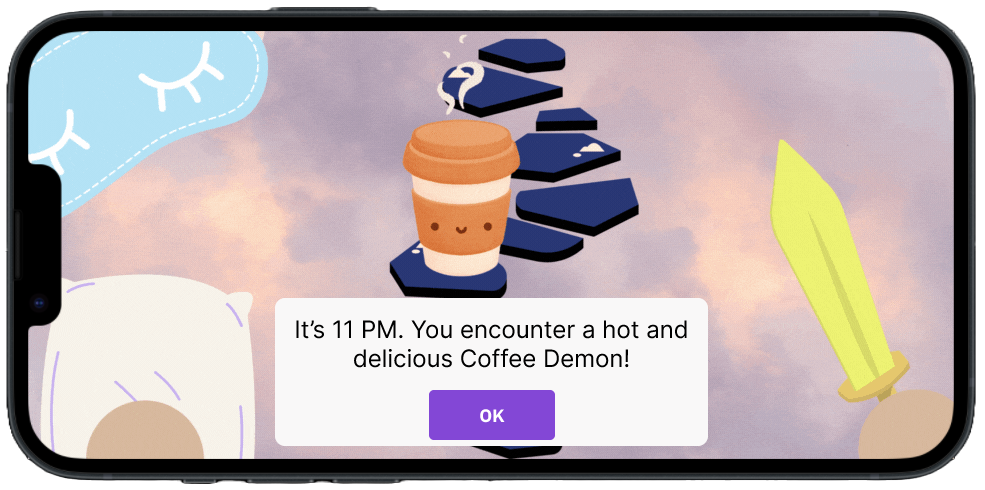
Daily Question Minigame
- Daily trivia question about sleep health
- Answer correctly for in-game currency (Z-coins)
- Playable once per day
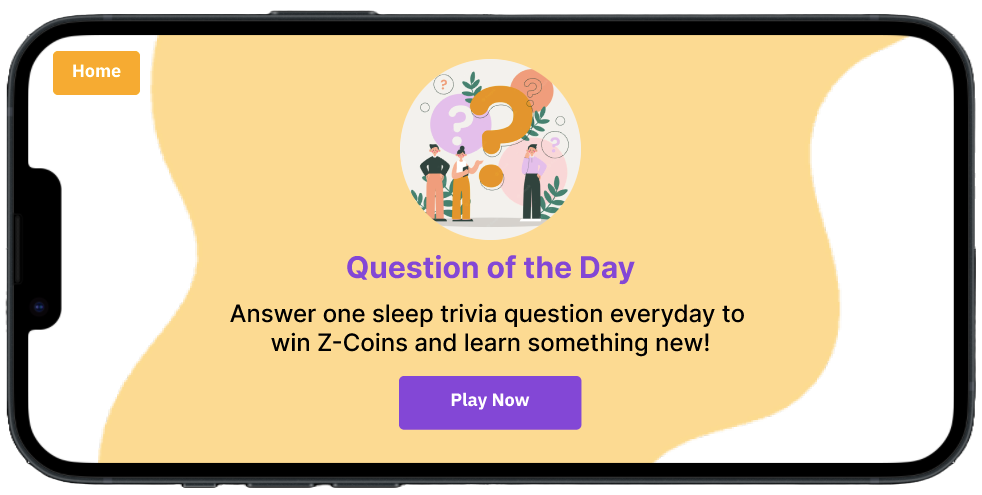
Profile
- Find all saved sleep facts
- View currently equipped cosmetic skins

Wearable Connection
- Connect to wearable to sync sleep data
- Earn Z-coins for meeting sleep targets
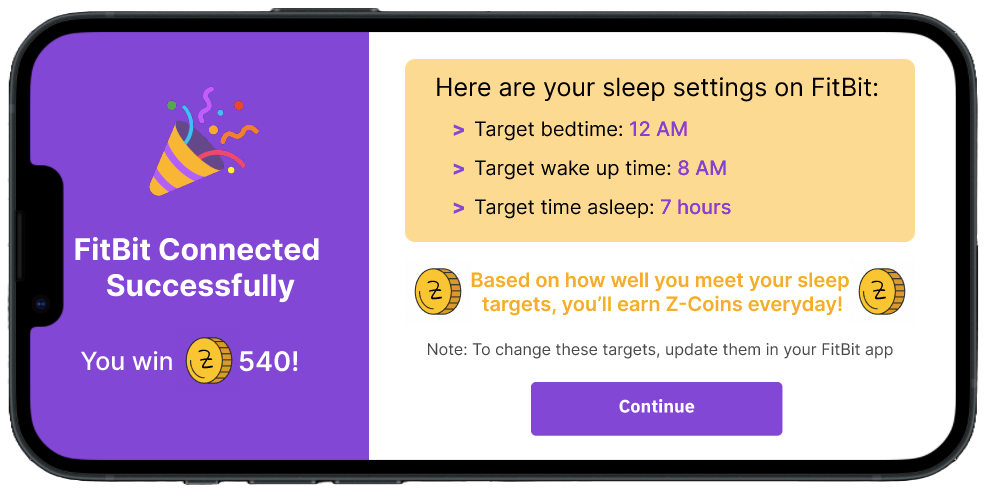
Shop
- Buy cosmetic skins with earned Z-coins
- Currently offers weapons, shields, and hats
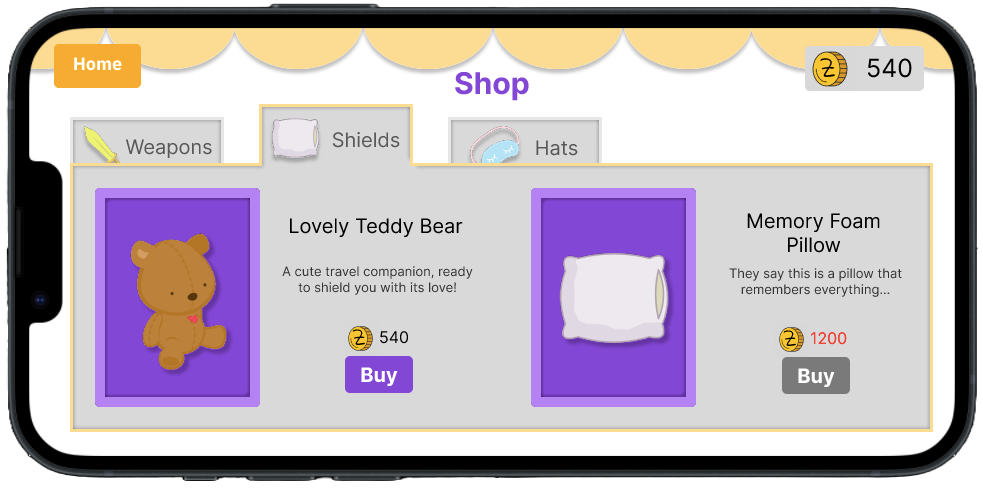
Product Demo Video
Watch our demo video below, from the perspective of a new user. Narration by me!
What was the process?
Initial Design Question
Due to the the time and resource constraints of this project, we had to limit our project scope to graduate students at the UW. This led to our initial design question: how can we help graduate students at the University of Washington form better sleeping habits?
Understanding the Problem Space
We started with a 25-question survey to a) determine the relevance of this problem to UW graduate students and b) identify the level of interest students had in forming better sleeping habits. We then conducted a literature review to reinforce our knowledge of sleep health. Finally, we conducted 6 user interviews to gain deeper insight into our target population's needs and wants in relation to sleep health and habits.
Research Goals
- Determine the relevance of sleep health as a problem to UW graduate students
- Understand the topic of sleep health
- Identify deeper needs and wants from our target users
Key Research Insights
- 100% of survey respondents think their sleep habits could be better
- Users want to learn more about sleep health
- Requirements for best sleep health are highly individualistic
- Users are interested in using technology for understanding and improving sleep
- Users want to be incentivized to develop and maintain sleep habits
Defining the User
Personas
We created three primary personas by aggregating data from our research. Abby represents a group of users who do not have consistent sleep habits and requires incentives to maintain them. Derrick represents a group of users who are unfamiliar with sleep health and want to have fun learning about sleep. Maddie represents a group of users who already have consistent sleep habits but need help understanding best personalized habits. See all three personas below.
Redefining the Design Question
From our research, we identified that our target users were indeed interested in sleep health. One strong theme emerged: users want to make a change to their sleep habits but do not know in what direction to direct their efforts. However, we also found that best sleep health varied from person to person.
With this in mind, we realized that no matter what their personal goals or needs are, educating users about sleep will ultimately help them make decisions about the best sleep habit for themselves. This led to our redefined design question: how can we educate UW graduate students about forming better sleeping habits?
Ideation
We came up with a few design goals after analyzing our key research insights. Our solution should:
- Educate users about sleep health.
- Have a low barrier to entry so taht users of all sleep knowledge levels can use our design.
- Be able to address a wide range of users' sleep needs.
- Be technological in nature.
- Be fun! Incentivize users to sleep.
Using these goals, we sketched out our ideas ranging from games to physical devices. Below are a few of our sketches.
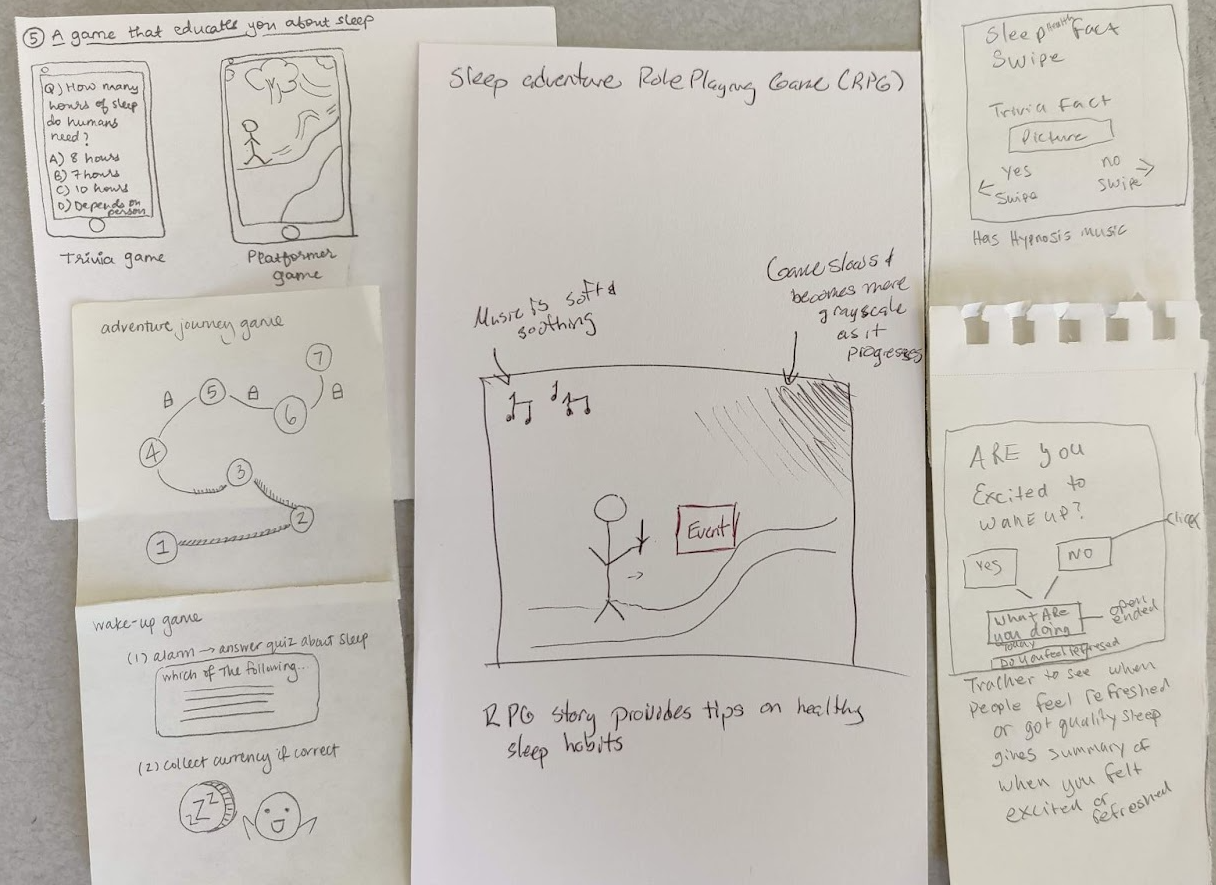
From our initial ideation sketches, we picked 3 ideas we thought most aligned with our design goals and resketched them. The resketches are shown below. Ultimately, we picked the RPG idea because it aligned with our goals while being a challenging solution.
1. Sleep pet
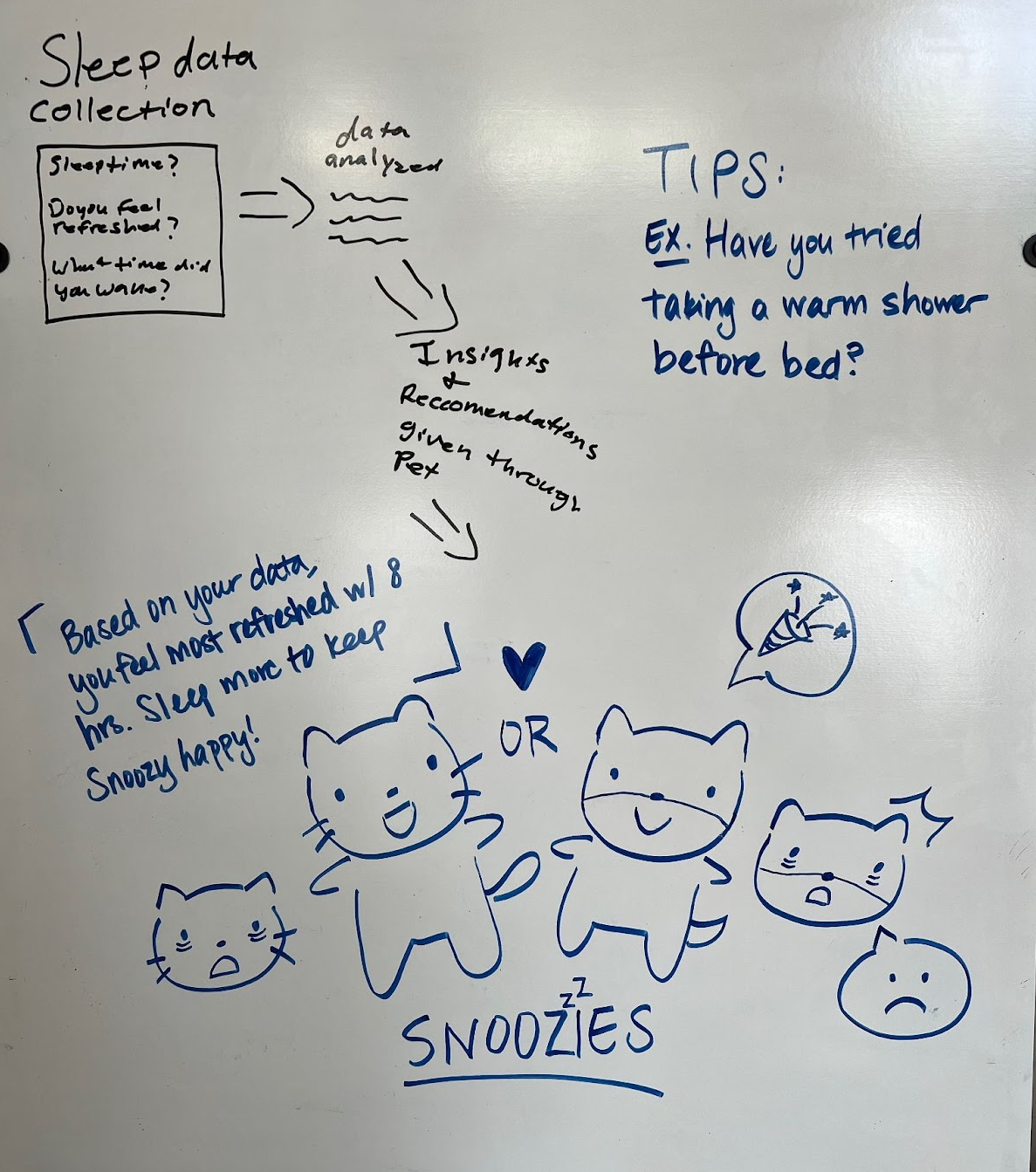
2. RPG
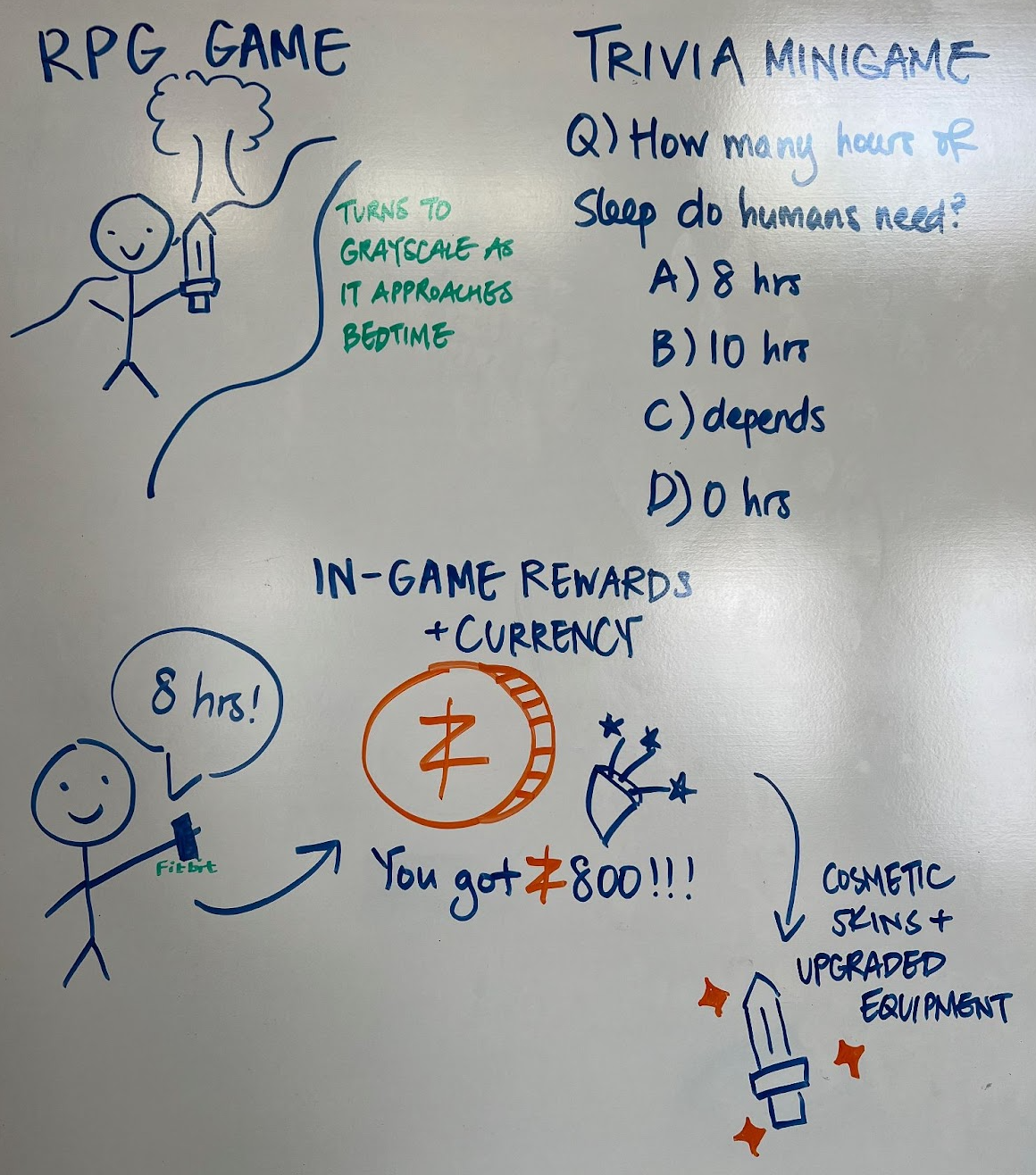
3. Physical device
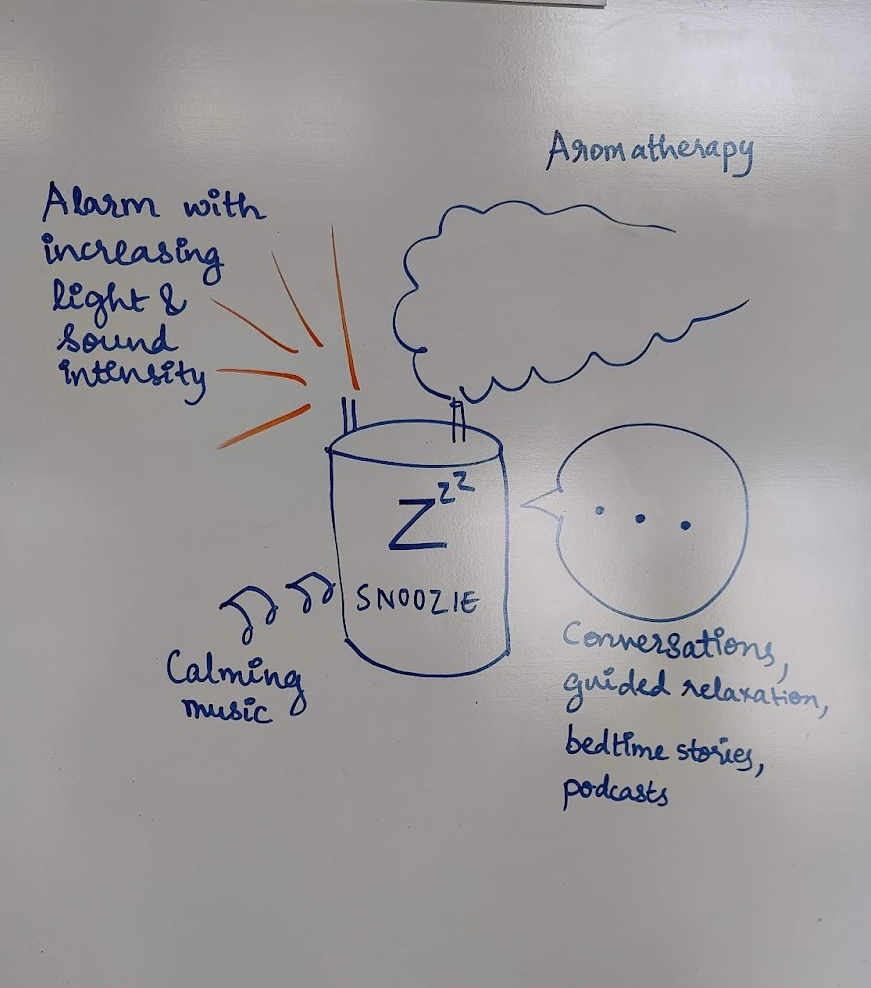
Storyboarding
From this RPG idea, I drew storyboards for key scenarios in which users would employ our solution. The image below depicts a user who is unmotivated to go to sleep. Upon realizing she receives in-game rewards for hitting sleep targets, she becomes motivated to go to bed.
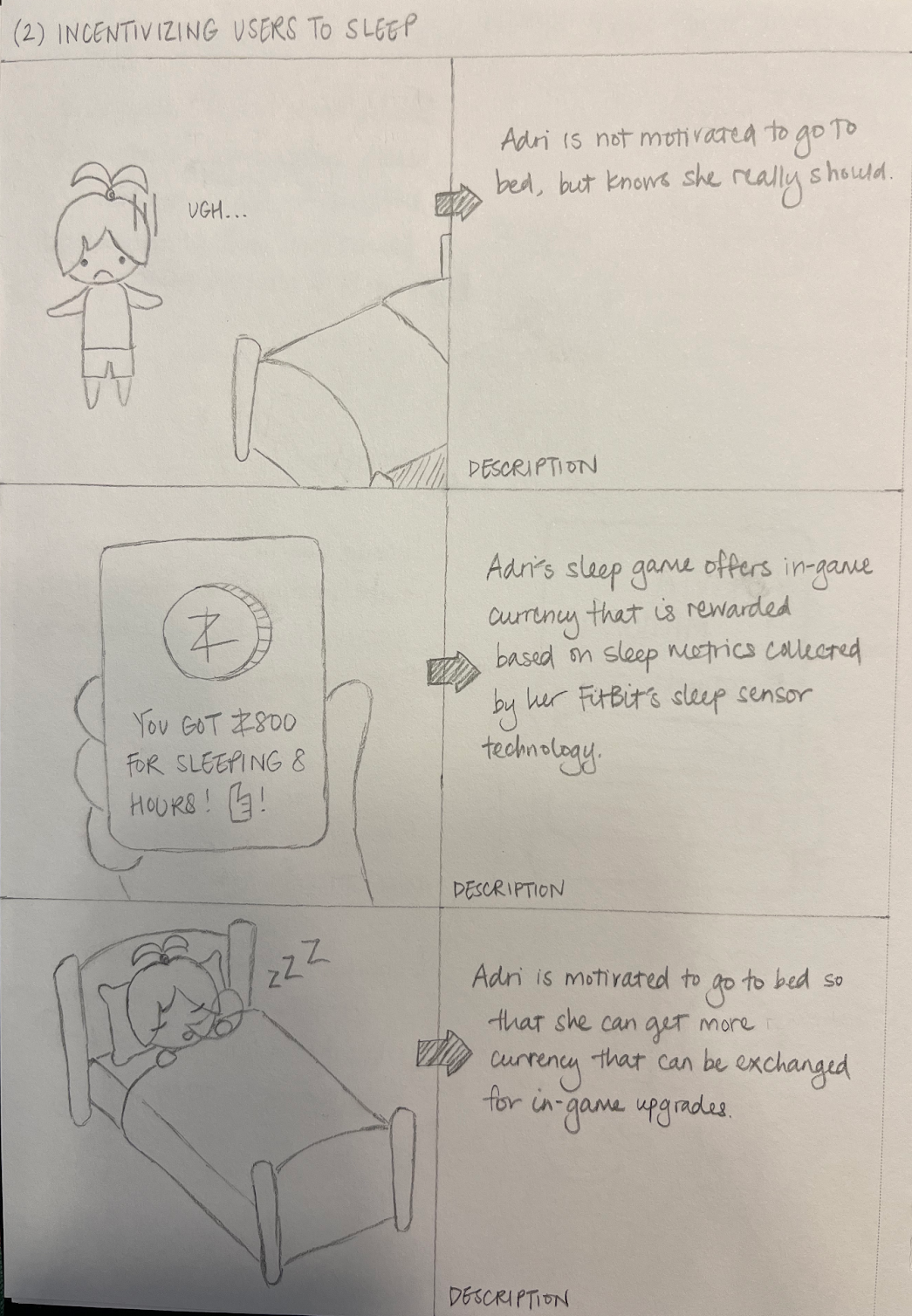
User Flows
We created user flows for some of the main features of our design. Seeing these flows laid out, we were able to better understand how a user might navigate through the game platform. It also helped us design layouts for each feature. The user flow for the RPG gameplay is shown below.
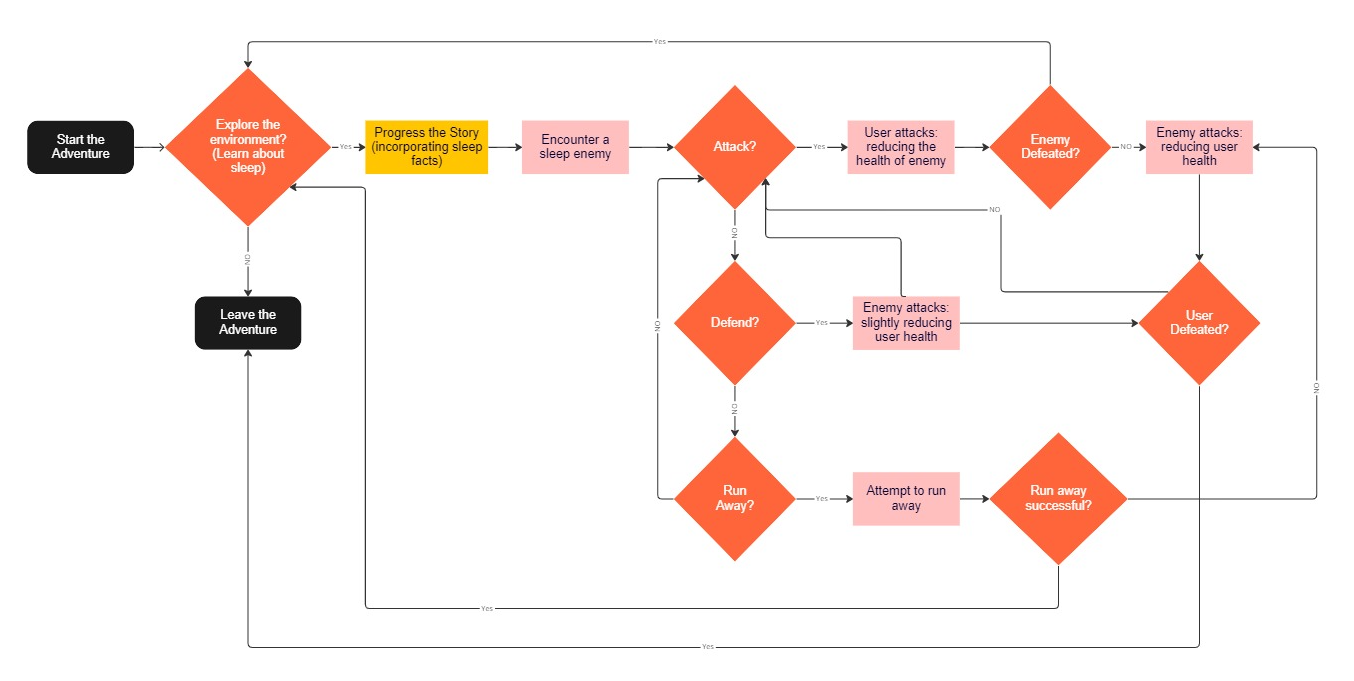
Mid-fidelity Prototype
Using our storyboards and user flows, we started building out key features for our game platform. We made screens for the onboarding process, homepage, profile, main RPG, daily trivia, and shop. I show some of the wireframes below.
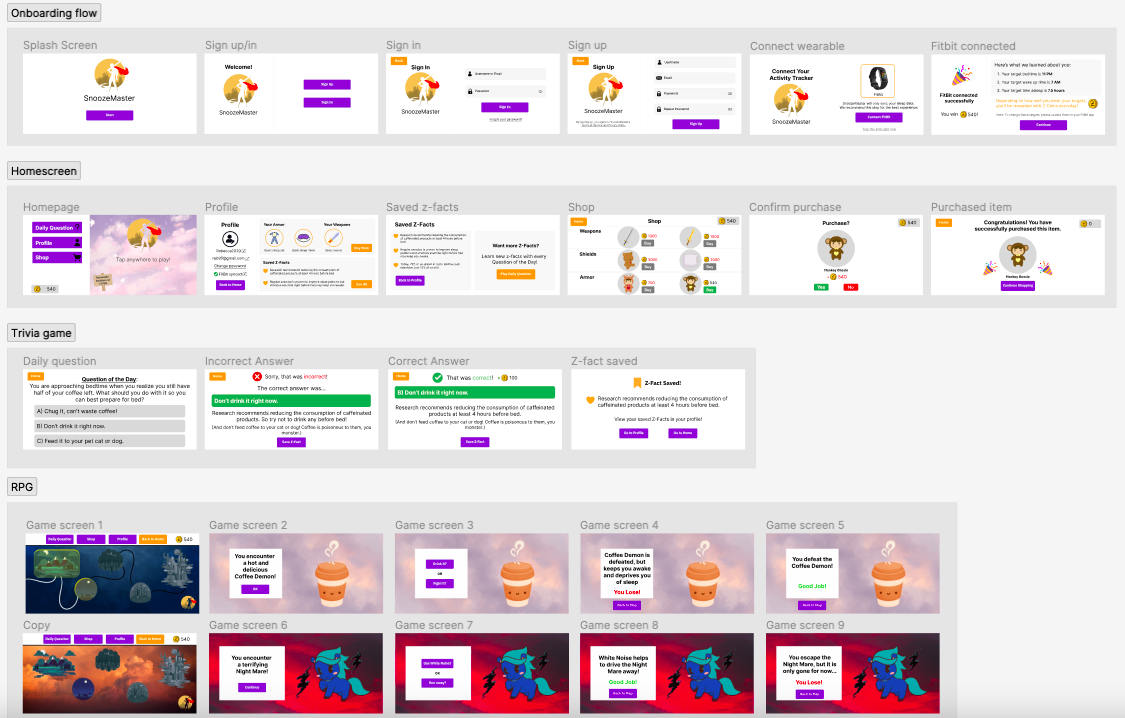
User Feedback and Testing
Usability Testing
We conducted usability tests on our mid-fidelity prototype with sample users from our IMT 540 course. We had our users complete a few tasks:
- Sign up for the platform and connect a wearable.
- Navigate to the RPG from home and play both levels.
- Play the daily trivia question.
- Save the sleep fact.
- Navigate through profile.
- Access the shop and purchase an item.
Findings and Iterations
From the testing, we established a few key areas of confusion among our participants. Below, I show a few changes we made based on user feedback.
High Fidelity Prototype
Incorporating the feedback from our testing, we built our final high-fidelity prototype.
Demo Video
Watch our demo video here, from the perspective of our persona Abby.
Learning and Takeaways
It was a fun first foray into UX! It was definitely a challenging problem space that my team chose to tackle. Due to time constraints, we didn't have enough time to conduct more user research. We also wanted to build a more robust gameplay experience, but were limited to screens we could implement in Figma. It was my first time designing a mobile application as well. Regardless, due to my own personal love for games, I had a lot of fun building SnoozeMaster.
What went well?
- Successfully designed a fairly complete game platform
- Working well with a full team with complementary strengths
- Game was well-received by both instructor and rest of the class
- Completion of my first UX design project, in an area (gaming) I'm passionate about!
Areas for Improvement
- RPG gameplay could be more mature and not limited to just 3 action choices
- Shop items are currently limited to cosmetic only, but they could be used to give certain stats
Future Work
- Develop the RPG further and add more levels
- Incentivize with leaderboards, badges, and awards
- Expand use of currency and enhance utility of shop items
